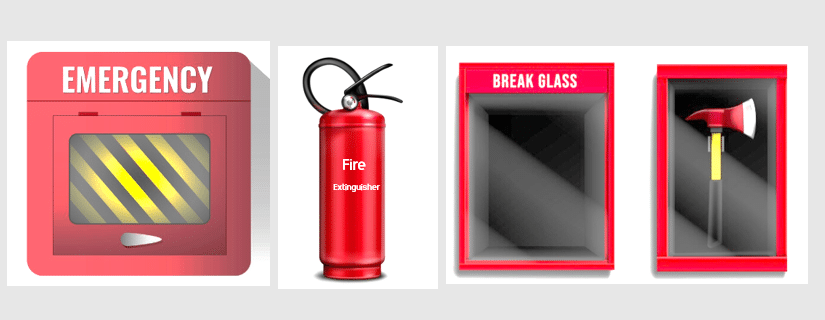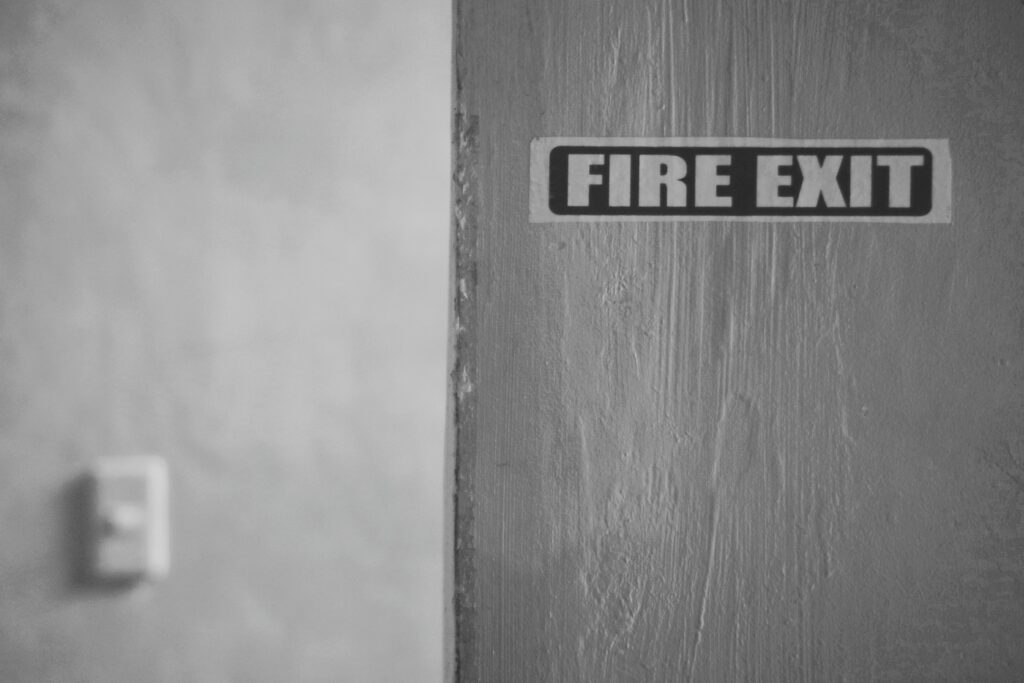What does FED stand for in Fire Safety? See All Answers.
The acronym “FED” has several applications in the fire protection field. The three-letter shorthand can represent a range of concepts related to fire preparedness, response, and prevention.
Understanding meanings behind the FED acronym supports greater fluency discussing key fire safety principles.
What does FED Stand for in fire safety?
- FED as Fire Exit Device
- FED as Fire Extinguisher Device
- FED as Fire Extinguisher Demonstration
- FED as Fire Evacuation Drills
- FED as Flat Entrance/Exit Door

1. FED as Fire, Exit, Device
One definition of FED stands for Fire, Exit, Device. Breaking this down:
Fire
Refers to detection and suppression components like:
- Smoke alarms, heat detectors, and sprinklers
- Manual fire alarm pull stations
- Extinguishers and hose stations
These items allow prompt fire detection and initial control responses.
Exit
Refers to building egress components like:
- Doors, stairwells, corridors
- Emergency exit signs and pathway lights
- Exit discharge pathways outside the building
These elements facilitate orderly evacuation from the building.
Device
Refers to specialty fire containment components like:
- Fire doors and dampers controlling spread of smoke
- Compartment barriers and fire walls
- Automatic door closers
These devices segment buildings into fire resistive zones for safety.
Together, the full FED system of fire, exit and devices allows integrated fire protection through detection, suppression, containment, and escape.

BUY NOW – ONLINE FIRE SAFETY TRAINING – CLICK HERE
2. FED as Fire Extinguisher Device
FED can also stand for Fire Extinguisher Device, referring specifically to portable handheld extinguishers critical for early fire response. Key facts on fire extinguisher devices:
- Classified by the type of fire they are designed to extinguish – Class A, B, C, D, K
- Have a safety pin preventing accidental discharge
- Are pressurized with an extinguishing agent like water, foam, CO2, or dry chemical
- Feature a nozzle, hose, or puncturing mechanism to dispense the agent
- Come in standard sizes like 5 lb, 10 lb, 20 lb based on the contained suppressant volume
- Require regular inspection, maintenance, and replacement after use
Understanding how to operate various FED models correctly allows swift suppression of emerging fires before extensive spread.

3. FED as Fire Extinguisher Demonstration
Expanding the acronym, FED can represent Fire Extinguisher Demonstration. These hands-on learning experiences build skills and confidence operating extinguishers under controlled conditions.
Key elements of fire extinguisher demonstrations:
- Review extinguisher parts – hose, agent, pin, handle
- Teach the PASS technique: Pull pin, Aim nozzle low at base of fire, Squeeze handle, Sweep side to side
- Allow each participant to practice deploying extinguishers properly on controlled fires
- Train on approaching fire, avoiding flashback, backpedaling away once fire is out
- Use prop fire pans or gas props designed specifically for simulations
- Provide coaching on grip, stance, agent application technique
- Emphasize that extinguishers are for small emerging fires only
The immersive learning cements skills and knowledge on how to safely suppress fires during initial incipient stages before growing out of control.

Do not carry anything with you to ease movement.
Image by upklyak on Freepik
4. FED as Fire Evacuation Drills
FED can also stand for Fire Evacuation Drills. These simulated walkthroughs of exit procedures train occupants on orderly emergency egress to an exterior assembly point.
Many fire safety trainers use ‘FED’ to refer to Fire Evacuation Drills, but there is no consensus on this acronym’s usage.
Key elements of evacuation drills:
- Sounding of fire alarm activates drill start
- Occupants stop work and trace primary egress route calmly
-sweepers check all areas are cleared before exiting - Staff await further instructions at outdoor assembly area
- Fire wardens account for occupants and report status
- Signal all clear to re-enter when drill completed
- Evaluate time to evacuate, procedural issues, and training gaps
Evacuation drills should be conducted at least quarterly to ensure highly practiced response during real fires. The hands-on practice saves critical evacuation time.
BUY NOW – ONLINE FIRE SAFETY TRAINING – CLICK HERE

5. FED as Flat Entrance/Exit Door
A final application of FED is Flat Entrance Door. This refers to fire-rated door assemblies required where exterior exit discharge doors open onto the egress path instead of into a recessed pocket:
- Marked with fire rating label like “1.5-Hour Fire Rated”
- Tested to withstand fire exposure without failure for duration
- Self or automatic closing against structure when released
- Labeled “EXIT” in contrasting large lettering
- Push side panic bar hardware so door opens outward with one motion
- Electrically interfaced to release locks on alarm
Proper FED door selection, installation, and maintenance ensures safe pathway out and prevents fire spread.
In Conclusion
To answer the question what does fed stands for in fire safety, we have been able to go through five meanings.
In fire protection, a broad spectrum of concepts fall under the simple but versatile acronym of FED.
Being conversant with the various definitions of what fed stands for in fire safety and the applications makes it easier to understand written plans and specifications as well as analysis reports that liberally use this abbreviated terminology.
Whether discussing fire response tools, containment methods, or emergency actions, FED covers key components that work in unison for multi-layered fire safety.
Let us Help you
We’ll help you find the right course for your needs. Tell us a little bit about your situation and what you would like to achieve.
We’ll get back to you within one working day.
